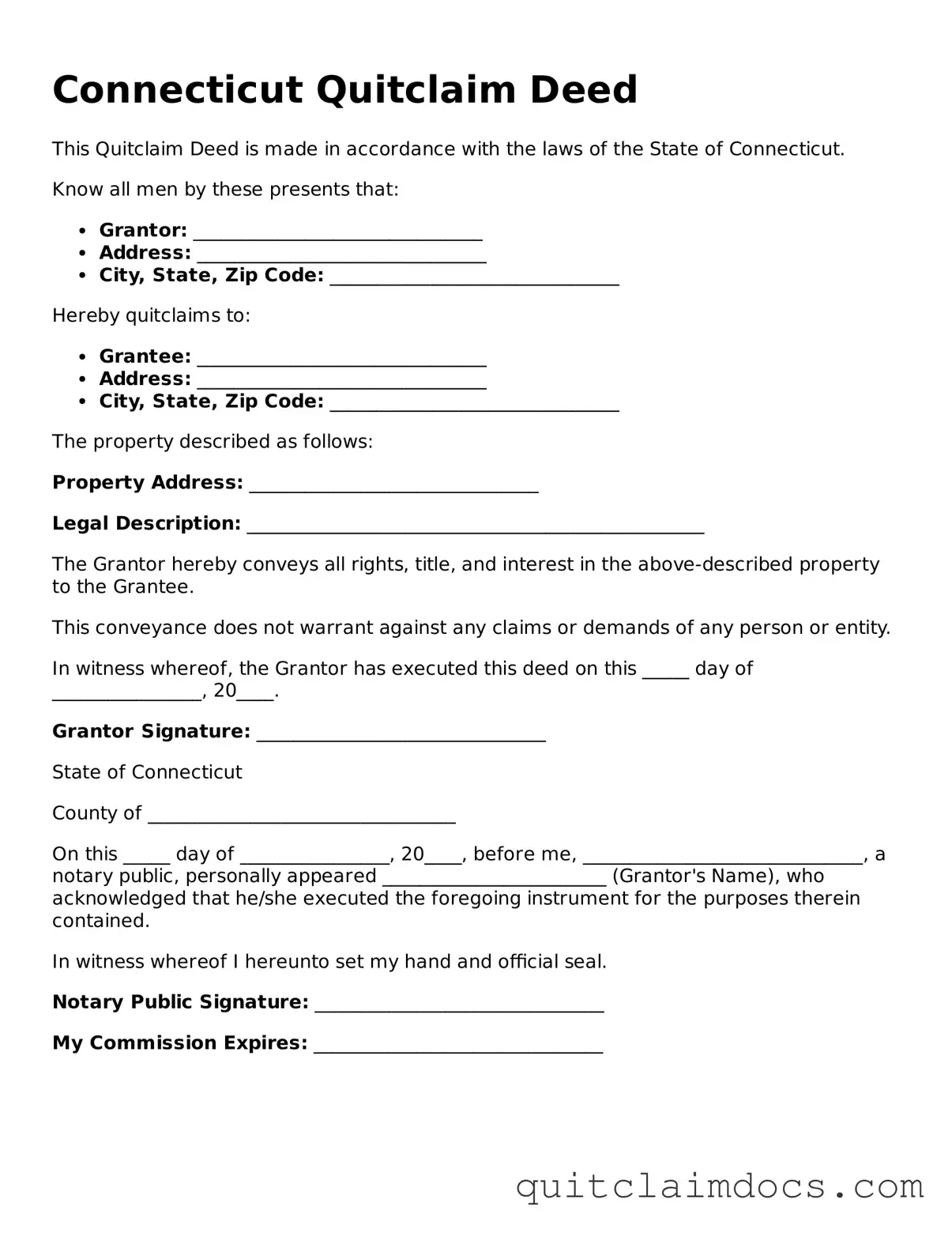Connecticut Quitclaim Deed
This Quitclaim Deed is made in accordance with the laws of the State of Connecticut.
Know all men by these presents that:
- Grantor: _______________________________
- Address: _______________________________
- City, State, Zip Code: _______________________________
Hereby quitclaims to:
- Grantee: _______________________________
- Address: _______________________________
- City, State, Zip Code: _______________________________
The property described as follows:
Property Address: _______________________________
Legal Description: _________________________________________________
The Grantor hereby conveys all rights, title, and interest in the above-described property to the Grantee.
This conveyance does not warrant against any claims or demands of any person or entity.
In witness whereof, the Grantor has executed this deed on this _____ day of ________________, 20____.
Grantor Signature: _______________________________
State of Connecticut
County of _________________________________
On this _____ day of ________________, 20____, before me, ______________________________, a notary public, personally appeared ________________________ (Grantor's Name), who acknowledged that he/she executed the foregoing instrument for the purposes therein contained.
In witness whereof I hereunto set my hand and official seal.
Notary Public Signature: _______________________________
My Commission Expires: _______________________________
